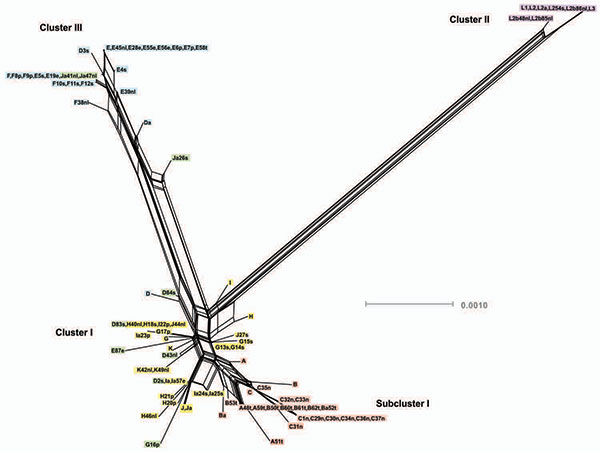Volume 15, Number 9—September 2009
Research
Predicting Phenotype and Emerging Strains among Chlamydia trachomatis Infections
Figure 5

Figure 5. SplitsTree obtained by using concatenated sequences of the 7 loci for the 87 isolates. Cluster I, noninvasive, nonprevalent Chlamydia trachomatis strains (gold) with trachoma Subcluster I (red); cluster II, invasive lymphogranuloma venereum (LGV) isolates (purple); and cluster III, noninvasive globally prevalent sexually transmitted infection (STI) strains (blue). Isolates colored green represent putative recombinant strains. Scale bar indicates number of substitutions per site.
Page created: December 07, 2010
Page updated: December 07, 2010
Page reviewed: December 07, 2010
The conclusions, findings, and opinions expressed by authors contributing to this journal do not necessarily reflect the official position of the U.S. Department of Health and Human Services, the Public Health Service, the Centers for Disease Control and Prevention, or the authors' affiliated institutions. Use of trade names is for identification only and does not imply endorsement by any of the groups named above.